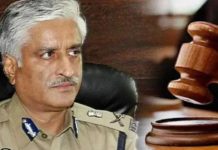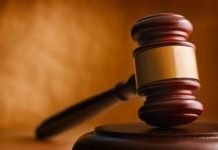Lt Governor officially becomes government in Delhi with President Kovind giving assent to the NCT Bill, which seeks to enhance LG’s powers, reports AMIT AGNIHOTRI
 The federal structure in the country has come under question over the past years as controversies over the role of Lieutenant Governors in Union Territories with assemblies and Governors in states became a subject of public debate.
The federal structure in the country has come under question over the past years as controversies over the role of Lieutenant Governors in Union Territories with assemblies and Governors in states became a subject of public debate.
Over the past decades, decisions of Governors and LGs, appointed by the President of India but chosen by the party ruling the Centre, related to government formation or imposition of President’s Rule, have led to trading of charges between the government of the day and the opposition.
The Governors, whose duties and responsibilities have been clearly defined in the Constitution, have often been accused by the party ruling the state of interfering in its functioning at the behest of the party in power in New Delhi.
The party ruling the state views the decisions of the Governor as influenced by the thoughts of the party ruling the Centre while the constitutional appointee justifies it as demands of the office.
Things usually move forward peacefully when coordination between the state government and the governor concerned is good but can at times go out of hand and assume political overtones. If persons holding constitutional offices clash, democracy takes a beating.
The issue has come into focus again as President Ram Nath Kovind on March 28 gave his assent to the Government of National Capital Territory of Delhi (Amendment) (GNCTD) Bill that gives more power to Delhi’s Lieutenant Governor now.
According to the bill, the ‘government’ in Delhi would mean the ‘Lieutenant Governor’ in the context of any law made by the assembly and it would be mandatory for the government to take the opinion of the LG before taking any executive action.
The legislation riled Delhi chief minister Arvind Kejriwal, who, along with Aam Aadmi Party leaders, earlier staged a protest at Jantar Mantar where he alleged the Centre wanted to weaken his government through the bill and urged it to withdraw the legislation.
The BJP, alleged Kejriwal, was scared of the development work done by his government, which won a second term in Delhi in 2020, and was now expanding into other states.
Kejriwal further alleged that the Central government had ignored the 2018 Supreme Court order which had clarified that the elected government should have more powers and the LG should act as per the advice of the council of ministers.
Interestingly, while the previous tenure of the Kejriwal government was marked by bitter confrontation with the then LG Najeeb Jung and later LG Anil Baijal on almost every issue, his approach has been more reconciliatory in the second term.
After the Kejriwal government’s tussle with the Delhi LG reached the Supreme Court, in July 2018, a five-judge Constitution bench of the top court had laid down broad parameters on how the national capital should be governed.
According to the top court, the LG had no independent decision-making power and that he had to make decisions on the advice of the cabinet.
In September the same year, the Centre had told the top court that Delhi’s administration cannot be left alone to the government and that the Centre had an extraordinary position as Delhi was the national capital.
The Congress, which usually targets the AAP government, backed the ruling party on the controversial bill saying the grand old party “was against the autocracy of the central government which wanted to murder democracy through the legislation.”
Delhi Congress chief Anil Kumar Chaudhary questioned the bill saying if the government meant LG, what was the meaning of an elected government. “Where will people go if the Delhi government means the LG? Then why elections were conducted. Why people voted,” he said.
Earlier. In another case, the top court had said that the Governor’s action should be to protect the Constitution and not to promote the political interests of any party.
“Undisputedly, a Governor is charged with the duty to preserve, protect and defend the Constitution and the laws, has a concomitant duty and obligation to preserve democracy and not to permit the ‘canker’ of political defections to tear into the vitals of the Indian democracy,” the top court said.
Over the past years, several Raj Bhavan occupants hogged the limelight as their views clashed with that of the party ruling the state.
WEST BENGAL
Besides Delhi, the other most talked about confrontation has been between West Bengal chief minister Mamata Banerjee and Governor Jagdeep Dhankar, a former BJP leader.
Banerjee has backed Kejriwal over the controversial bill to curb the role of the Delhi government.
Earlier, she had a war of words with the Governor over the approval of policy decisions related to the public distribution system under which subsidized grains are given to poor, Covid-19 management and transfer of central benefits to around 70 lakh farmers in the state via the PM Kisan scheme.
Banerjee shot off an angry missive to Governor Dhankar in April last year reiterating she was the elected head of the state and the Governor being a nominated post had restricted powers.
The chief minister had quoted Dr BR Ambedkar to point out that the Governor had no power to interfere in the working of a provincial ministry.
The letter was termed as factually wrong and constitutionally infirm by Dhankar, who argued he could not be in sleep mode when there were stressful challenges before the state. The governor reiterated he was only trying to work together with the chief minister in addressing these challenges.
Earlier, in 2017, Mamata had accused then governor Keshari Nath Tripathi of threatening her. While Tripathi denied the charges, the BJP said that West Bengal was not a dictatorship and would be run as per rules.
Congress leader KTS Tulsi had noted that the center of power in a state was the chief minister and that the governor should not give an impression of being an agent of a political party.
PUDUCHERRY
In Union Territory Puducherry, former chief minister V Narayansamy was constantly at loggerheads with former LG Kiran Bedi, a former IPS officer and a BJP leader ever since the two took charge of their respective offices in 2016.
As chief minister Narayansamy sat on a dharna outside the Raj Nivas and even petitioned PM Modi against Kiran Bedi’s style of functioning.
The two clashed over appointment of officers, nomination of MLAs and even wearing of a helmet while riding a two-wheeler. In 2018, the Supreme Court said the Lt Governor had the power to nominate MLAs.
The decision came after Narayansamy government challenged the nominations stating that Bedi never consulted the ruling party.
PUNJAB
Last year Punjab chief minister Amarinder Singh blamed Governor VP Singh Badnore, a former BJP leader, for holding back the three farm laws passed by the state assembly to negate the three central laws as the farm protests flared up in the northern state and reached Delhi’s doorstep in November 2020.
Singh protested the Governor’s move in Delhi’s Jantar Mantar after a meeting with President Ram Nath Kovind was not granted to him.
Later, the chief minister reacted strongly to Governor Badnore summoning the Punjab chief secretary and police chief to question them on the alleged law and order problems in the state, amid sporadic incidents of damage to mobile towers.
Reacting to Governor’s summons to the state’s top officials, Singh said the BJP’s propaganda on the collapse of law and order in the state is nothing more than a tactic to divert attention from the farm laws issue and the resultant farmers’ agitation.
GOA
The Congress accused Governor Mridula Sinha of not inviting the party for government formation despite it emerging as the single largest party in the 2017 assembly polls.
As a result, the BJP with lesser numbers managed to forge a coalition with the support of regional parties and formed a government headed by Manohar Parrikar, who quit as defence minister.
When Rahul Gandhi attacked Governor Sinha for being partisan, then finance minister Arun Jaitley had pointed out that given Parrikar’s claim of having support of 21 lawmakers, the Governor could not have invited the Congress with 17 MLAs to form a government.
The situation arose after the BJP won 13 seats and Congress 17 out of the total 40. But the BJP staked claim to form the government on the basis of support from eight other MLAs.
KARNATAKA
In 2018, Congress had protested against Governor Vajubhai Vala’s “illegal” decision to allow BJP leader BS Yeddyurappa to take over as chief minister, “despite being in a minority”.
The BJP has emerged as the single largest party winning 104 seats, but was short of a simple majority while the Congress and Janata Dal (Secular) had won 78 and 37 seats respectively, and claimed their post-poll alliance had the numbers to form the government.
The Congress had supported Janata Dal (Secular) leader HD Kumaraswamy as chief minister of the alliance government and later challenged the decision of the Governor in the Supreme Court.
West Bengal Chief Minister Mamata Banerjee had then targeted the BJP, saying she didn’t know why the Karnataka Governor had not invited Janata Dal (Secular) leader HD Kumaraswamy to form the government.
Banerjee had endorsed the views of BSP supremo Mayawati who had termed the entire episode as a conspiracy to destroy the Constitution.
In a dramatic turn of events and midnight hearing in the top court, Yeddyurappa was asked to prove his majority on the floor of the house and later resigned when he failed to muster the required numbers.
MANIPUR
The Congress had attacked Governor Najma Heptulla for inviting BJP to form a government and letting N Biren Singh take oath as chief minister. Here too, four Naga People’s Front (NPF) lawmakers had met Governor Heptulla and said they were backing BJP.
Earlier, four National People’s Party lawmakers had backed the BJP which had claimed the support of 32 MLAs, including its 21, in the 60-member Assembly. The Congress won 28 seats in Manipur, emerging as the single largest party.
MAHARASHTRA
In 2019, the Shiv Sena, Congress, Nationalist Congress Party challenged the decision of Governor Bhagat Singh Koshyari, a former BJP leader, rejecting their claim to form the government. After an intense court battle, the alliance managed to prove strength on the floor of the house and come to power against the wishes of the BJP which was miffed over old ally Shiv Sena parting ways.
Koshyari had administered the oath of office to BJP’s Devendra Fadnavis with then NCP rebel Ajit Pawar as his deputy early morning shortly after the President’s rule was lifted at 5.47 am.
RAJASTHAN
Amid the bitter power tussle between chief minister Ashok Gehlot and his former deputy Sachin Pilot, Governor Kalraj Mishra, a former BJP leader, had refused permission to the chief minister to convene a special session of assembly to stage a trial of strength in 2020.
Gehlot then had to give in writing that he wanted a short session to discuss ways to deal with the menace of Covid-19.
UTTARAKHAND
In 2016, Governor KK Paul recommended the dismissal of the Harish Rawat government after nine Congress MLAs led by former chief minister Vijay Bahuguna defected to BJP. Then High Court chief justice KM Joseph noted the court was “pained” over the actions of the central government which was acting like a “private party”. The Supreme Court upheld the high court order and the Rawat government was reinstated after proving the majority.
BIHAR
In 2017, Governor Keshari Nath Tripathi ignored the claim of the single largest party Rashtriya Janata Dal and appointed Nitish Kumar the chief minister after the latter’s Janata Dal (United) broke its grand alliance with Congress and RJD and formed a post-poll alliance with BJP to stake claim to form the government.
PAST IMPERFECT
Though the role of governors has come in public debate during the BJP rule over the past years, there have been several controversies around persons occupying the high office earlier during the rule of Congress and other governments at the centre.
1959: EMS Namboodiripad government was dismissed, President’s Rule imposed in Kerala.
1967: West Bengal Governor Dharma Vira dismissed the Ajoy Mukherjee government and installed PC Ghosh as chief minister.
1984: Andhra Pradesh Governor Ram Lal installed minister Nadendla Bhaskara Rao as chief minister when Chief Minister NT Rama Rao was abroad for heart surgery.
1989: Karnataka Governor P Venkatasubbaiah dismissed the SR Bommai government.
1996: Gujarat Governor Krishna Pal Singh recommended President’s Rule even after then chief minister Suresh Mehta proved majority in the House.
1998: Uttar Pradesh Governor Romesh Bhandari dismissed the Kalyan Singh government in the state and swore Loktantrik Congress leader Jagdambika Pal as chief minister. However, the court reinstated Singh who won the floor test.
2005: Bihar Governor Buta Singh recommended the dissolution of the Assembly even as Janata Dal (United) and BJP claimed support of 115 lawmakers out of a total of 243 to form a government.










